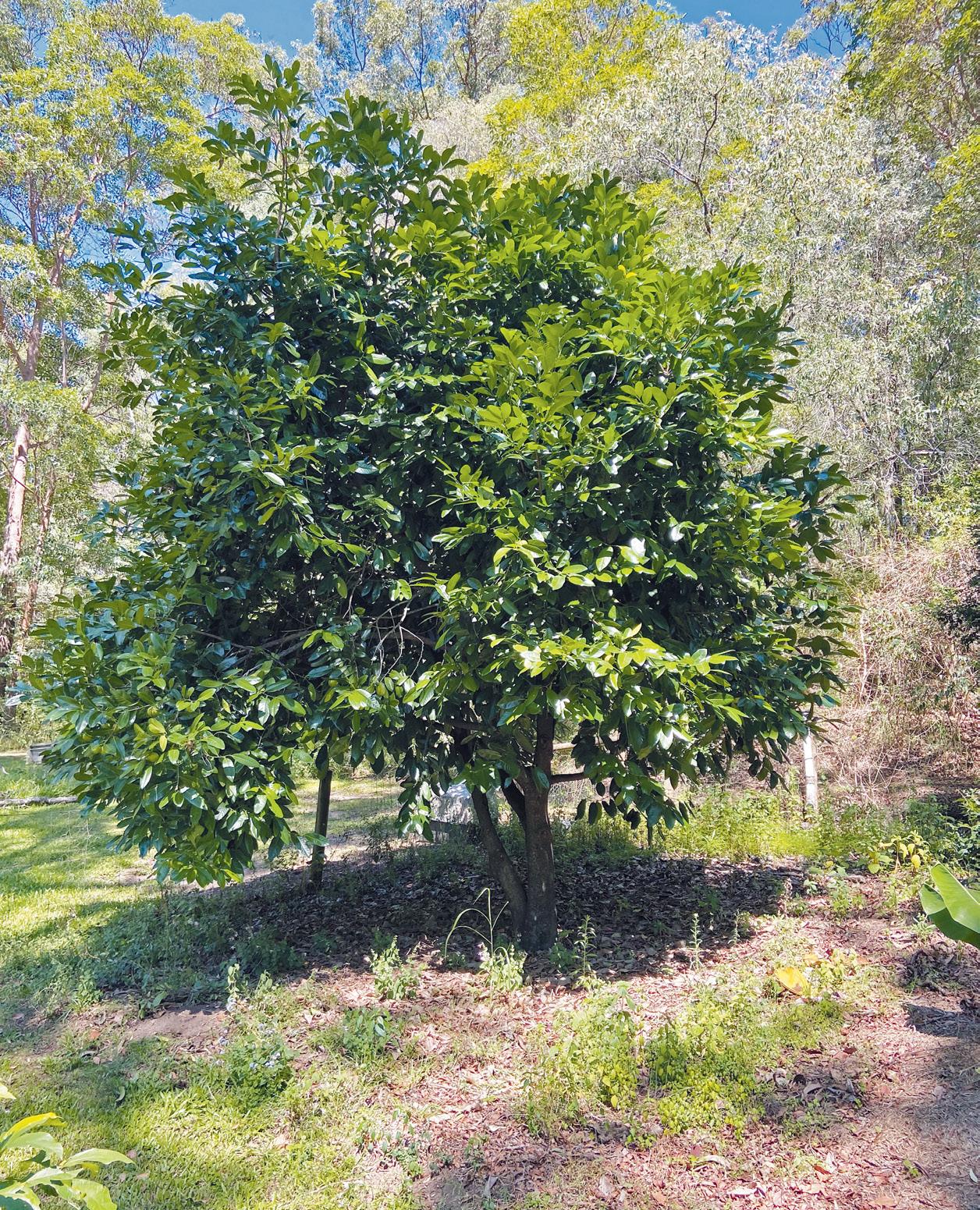
4 minute read
Chocolate Pudding Grows on Trees
By Julia Schafer, Boyland, Qld.
Grow your own healthy desserts with this less common fruit.
Advertisement
When we moved into our house in the beautiful Scenic Rim at the base of Mount Tamborine, I searched the whole property to find established fruit trees, hoping that like many Queensland homes that there might be a mango, avocado or macadamia tree. The previous owners had planted a lemonade tree which I was excited to see was prolific with large juicy fruit, although planted just a little close to the house for the size of the tree. I also found a lime, mandarin and orange tree behind a towering mock orange hedge and so totally shaded and stunted. As they were well established the root systems were not going to survive being dug up and moved so I have just left them for now.
I spied some huge palms that resembled bananas in a grove but they turned out to be giant birds of paradise. What a disappointment!
On the fenceline was a sprawling tree that I recognised immediately by the shape of its leaves, a mulberry! Yippee, I had always wanted a mulberry. We quickly pruned it back to a manageable size and waited for mulberry season. Once I saw the myriad of flowers appearing and the swarms of native bees I got more and more excited at the prospect of large dark purple fruit, potential pies, jams and topping for ice cream. But as each and every flower dropped to the ground without producing fruit I felt more dejected. I searched the net and was disappointed to discover it was a fruitless mulberry planted for its privacy screening and nothing else. Argh!
After all this disappointment I turned my attention to the beautiful shade tree with glossy green leaves that seemed to be purpose- fully planted in the fenced off area which houses the water tanks. I had no idea what it was, but was hopeful that it was edible. I searched the ground under the tree for pips, seeds, shells, wanting, hoping, to find a trace of what might be something to give me a clue. I looked up into the highest branches and spied a glimpse of two round fruit! Yippee! But what were they?
They resembled a tamarillo but were more round, like a persimmon, but not quite. I posted a picture on a local gardening Facebook group and the answer came back. It was a black sapote, otherwise know as the chocolate pudding fruit tree. Sounds interesting, I thought.
I researched to find out about the fruit, when to harvest it and how to use it. A species native to Mexico, Central America and Columbia, it loves the warmer parts of Queensland and friends who had previously lived in Townsville knew all about it. They were so excited when they heard we had one and shared some delicious recipes with me.
The first fruit I harvested was a disappointment, apparently I picked it too early and it took weeks before it attained an olive green colour and was slightly soft. When I cut it open it smelt of rotten vegetation which is exactly what it was at that point! The telling sign that a fruit is ready for harvest is when the calyx (the top knot that comes between the fruit and the stem) shrivels and lifts. The test being you can feed a sheet of paper or business card underneath the calyx easily. Armed with this knowledge I went and per- formed this test to the fruit I could reach and discerned that they were not quite ready. cH oco L ate Pudding Fruit c ake
The next fruit I harvested fell to the ground of its own accord. I placed it on the window sill and within five days it was soft to the touch and had started to turn olive green. Unfortunately it was close, but not close enough, and the fruit wasn’t even sweet, though looking decidedly like chocolate pudding. At this point I was ready to get rid of the tree and replace it with something that we could use, but then I spied a huge fruit, up too high for me to reach so I asked my son to climb a ladder and see if he could pick it for me.
The fruit was the size of a baseball and weighed a whopping 500g! I placed it on its side in the windowsill and within three days it had turned olive green with a metallic look about it. The side it was lying on had flattened and so we opened it up. It looked like chocolate pudding, it scooped out with the consistency of chocolate pudding and it tasted sweet! Yippee! Some websites had warned that it really doesn’t have a chocolate taste and suggested to mix the pulp with a teaspoon of cacao, which I did and wow, yum, we have a winner!
I’ve since learnt to recognise when my fruits are ready to harvest, know the right colour olive to look for to open them up and have become adept at transforming this interesting fruit into ice cream, ice blocks for smoothies and to replace beetroot in my now famous chocolate pudding fruit cake which I am happy to share with you.
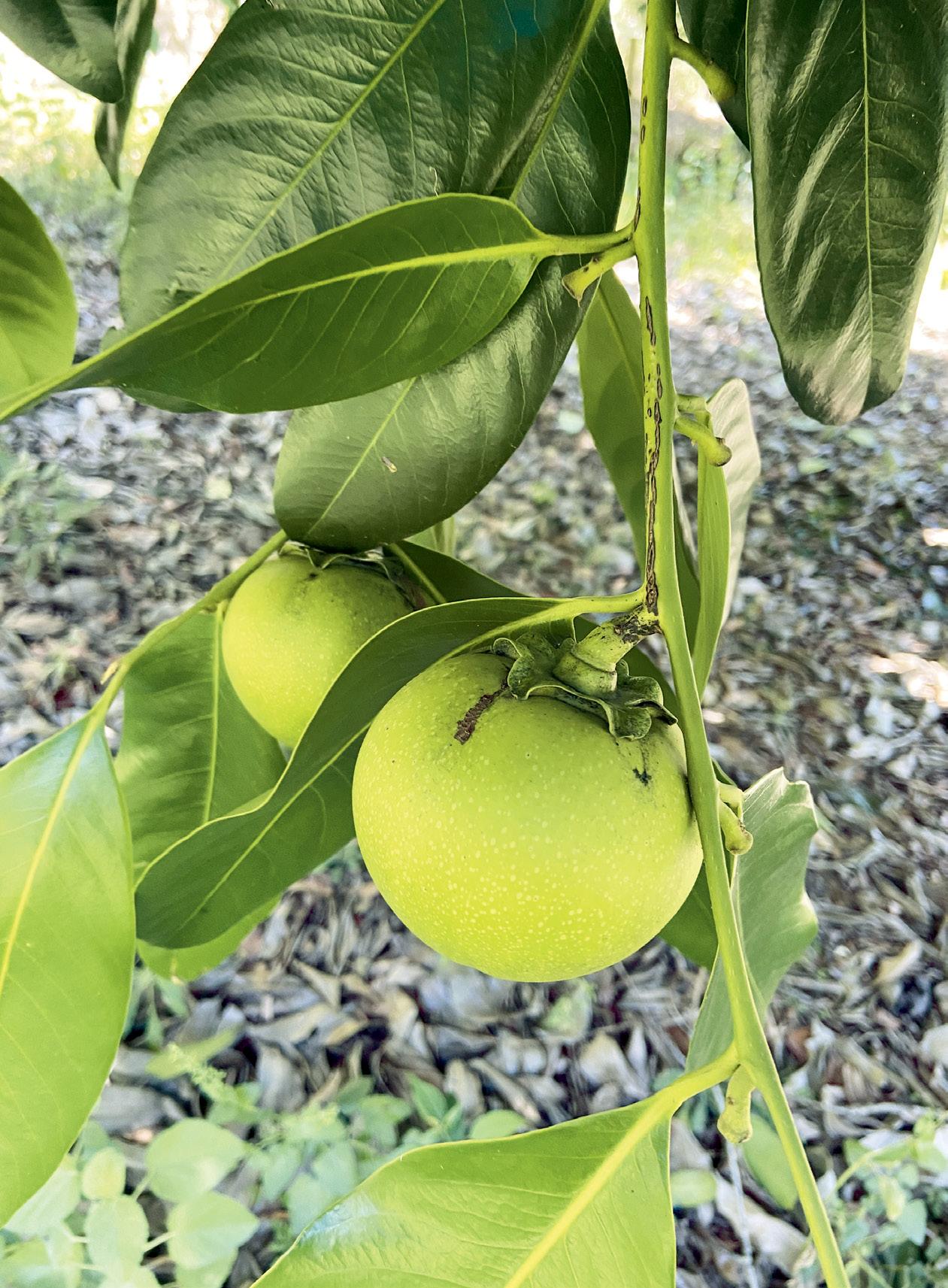
100g dark chocolate
180g butter
3 medium free range eggs
300g brown sugar
300g chocolate pudding fruit pulp
1 tsp vanilla extract
30g cacao powder
100g plain flour
11/2 tsp baking powder
100g almond meal
1/4 tsp salt
Preheat the oven to 180°C and line one square 20 x 20cm cake tin. Melt chocolate and butter in a double boiler or microwave on high for 30 seconds, give it a stir and microwave another 15 seconds until melted.
In a separate bowl lightly whisk together the eggs and sugar.
Slowly add the chocolate pudding fruit, melted chocolate and vanilla into the egg mixture. Beat until just combined.
Sift the cocoa, flour and baking powder, add this and the almond meal and salt to the batter. Fold until just combined, do not overmix.
Pour into the cake tin and bake for 35–45 minutes, or until the cake just springs back when pressed. Leave to cool and serve like a brownie with ice cream or a dollop of double cream.
If you don’t have a black sapote growing at home, you may find them at the markets, but if you are happening to pass through Canungra in the beautiful Scenic Rim anytime in the next few months send me a message on Instagram as our tree’s branches are bending with the weight of this amazing fruit.

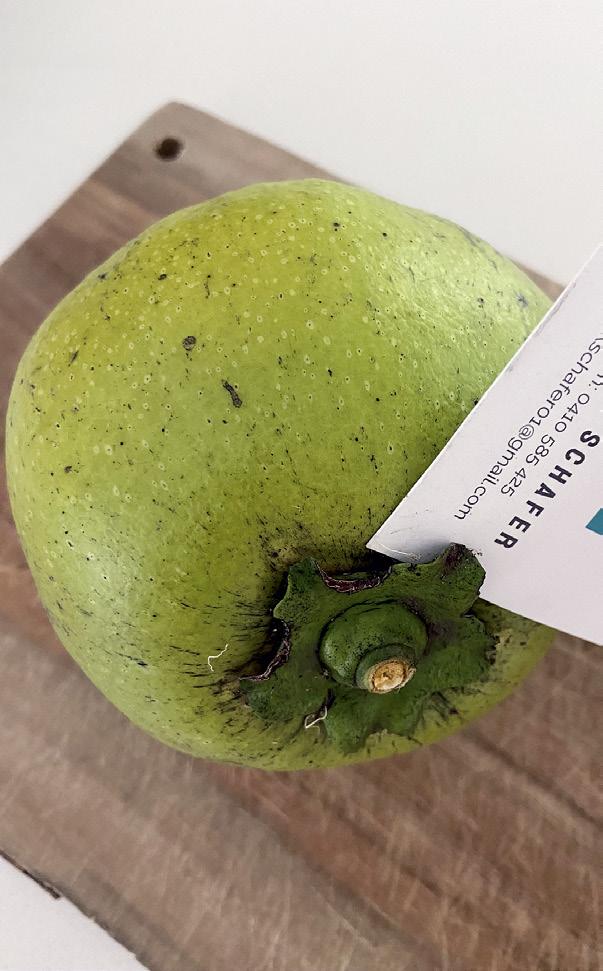
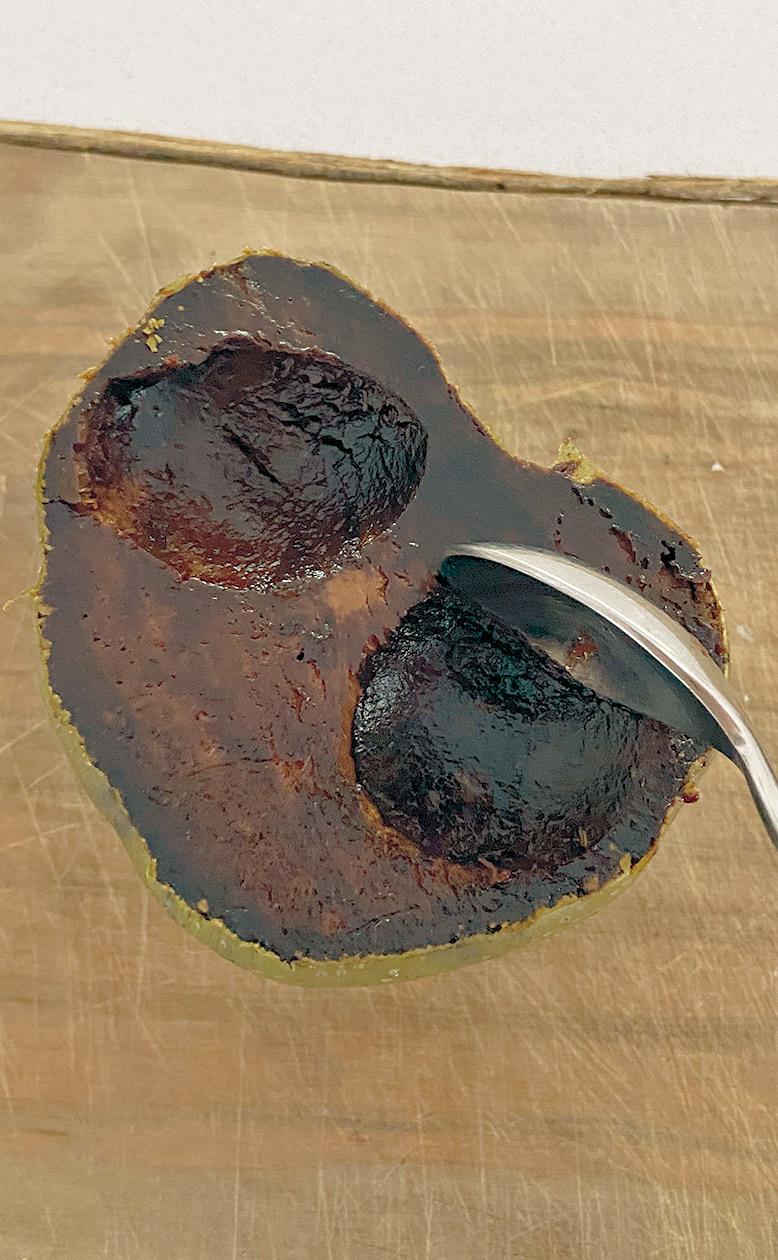
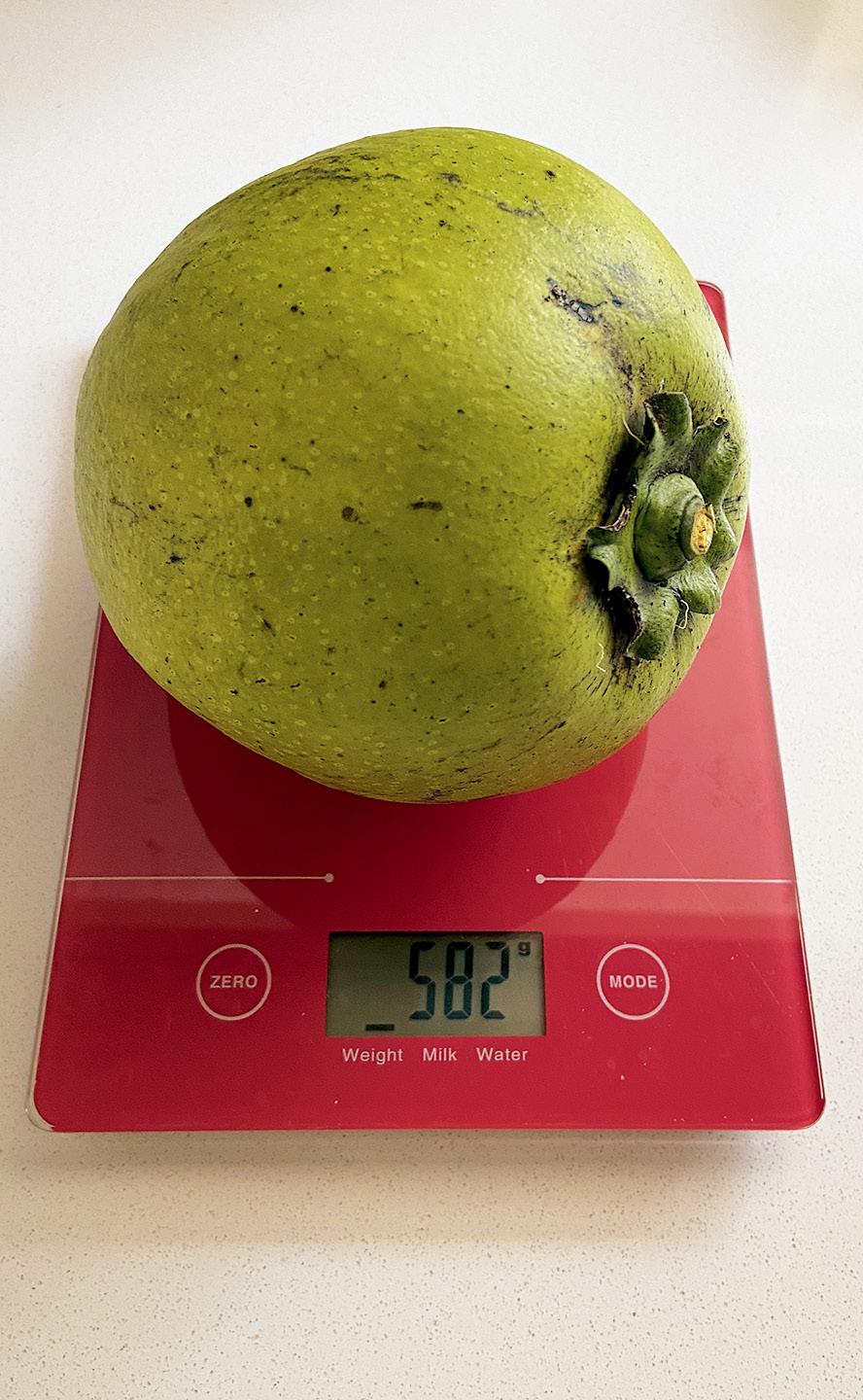
Julia Schafer is passionate about sustainable living. See her on Instagram @lighter_foot_prints. T


BY KATE DOWNHAM










